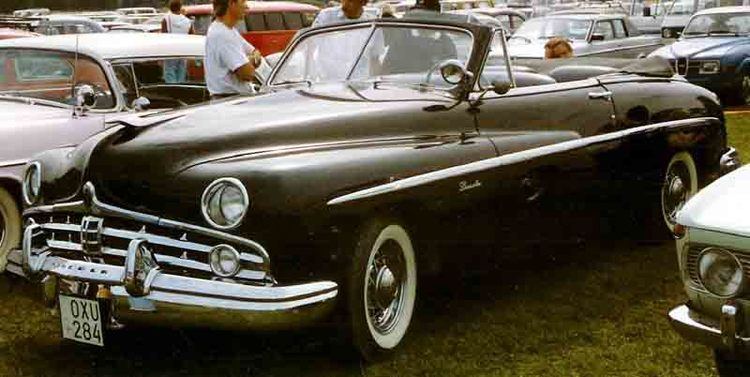Manufacturer Lincoln (Ford) Model years 1949–1951 | Also called Lincoln Class Full-size luxury car | |
 | ||
Assembly Maywood Assembly, Maywood, California, United States
Lincoln Assembly
Dearborn, Michigan, United States
Edison Assembly, Edison, New Jersey, United States
St.Louis, Missouri, United States Designer Eugene T. "Bob" Gregorie | ||
The Lincoln EL-Series is a full-size luxury car that was marketed and sold by the Lincoln division of Ford Motor Company from the 1949 to 1951 model years. For the 1949 model year, Ford introduced redesigned model lines for all three of its divisions. To share development costs, Ford combined its separate Lincoln and Mercury divisions into the Lincoln-Mercury Division following World War II. As a result, the redesigned postwar Lincoln shared much of its design with the redesigned 1949 Mercury Eight.
Contents
As with its K-Series and H-Series predecessors, the division marketed the EL-Series using only the Lincoln division name; the Lincoln Cosmopolitan was only the third Lincoln (beyond the Zephyr and Continental) to have a separate model name. In a major departure from division precedent, the EL-Series was the first Lincoln produced without a V12 engine. As a V12 developed for the EL-Series was stillborn, Lincoln utilized a version of the Ford Flathead V8 shared with the Ford F-7 and F-8 conventional trucks.
1949
The first all-new postwar Lincolns were introduced on April 22, 1948. They had a more streamlined appearance than the 1948 models, reflecting "ponton" styling. However the new two-piece windshield seemed a bit out of sync with the modern styling. At a distance it was hard to tell a Lincoln apart from a Mercury. Recessed headlights and a shinier front end set it apart. The 337 cubic inch Lincoln flathead V8 produced 152 hp (113 kW) at 3600 rpm.
1950
In 1950 a new horizontal grille with elements enhanced the appearance of the standard Lincoln. Its name was in the same location on the front fender as last year, but it was larger. The doorhandles were improved as was the previously confusing interior layout. The convertible was dropped from the lineup as Mercury's near-identical convertible had outsold it by a wide margin in 1949. On 5 July 1950 the Lincoln Lido was introduced as somewhat of Lincoln's answer to the GM hardtops that had debuted in 1949. List price for the 1950 model was $2721. It was similar to the Mercury Monterey and the up market Lincoln Cosmopolitan Capri coupes, while the Lido was also offered as a sedan with suicide doors for rear seat passengers. Both years of the Lido featured a vinyl or canvas-covered roof, fender skirts, bright roof drip rails and rocker panel moldings, dual door mirrors, a gold-colored hood ornament from the Cosmopolitan and a custom leather interior with special door and side panels. An electric clock was standard. Few were sold, as customers preferred General Motors' hardtop offerings. The Lido name, however, reappeared on a 1963 show car called the Lincoln Continental Lido, which was a 1963 Continental with a padded vinyl roof.
Late in the 1950 model year the engine was upgraded to address vibration and oil consumption concerns. Three rather than four piston rings were fitted, and the engine balancing was improved. As a result the horsepower rating increased marginally and the car ran smoother. The cooling system was also improved and durability was increased thanks to the use of more alloy.
1951
The front end of the 1951 Lincoln looked like a 1950 model that had gotten into a fight, and lost. The grille bar only extended from the center section to the bumper guards, while a forward slanting vertical piece was added to the front fender side chrome. The word Lincoln was written behind it. The 1951 Mercury's "fishtail" rear design was also adopted, to the detriment of rearward visibility. The glamorous Lido coupe returned with a canvas or vinyl roof, fender skirts, rocker panel molding and custom interior.
